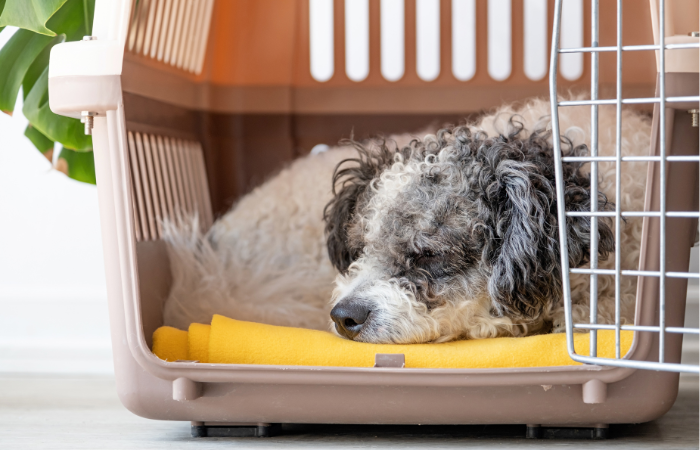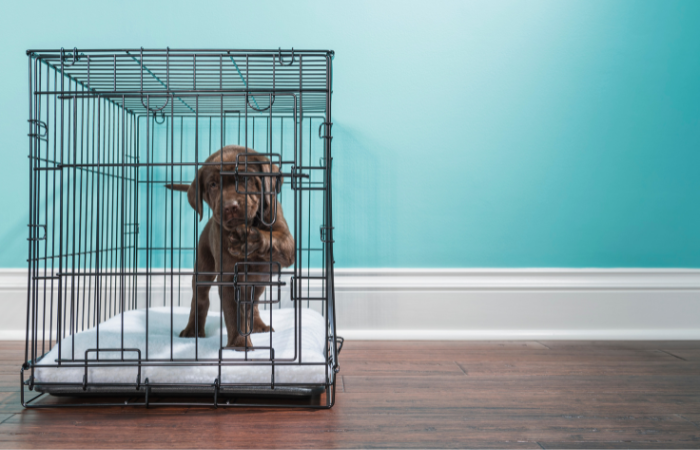Understanding the Basics of Crate Training for Dog Ownership
Learning the basics of crate training your dog is a great way to keep them safe and create an inviting, secure home for them. Even if they have free reign in your house, a carefully-used crate during potty training will help you take advantage of their natural drive to find somewhere with boundaries. With some guidance from you on when it's alright to come out, as well as returning back regularly - can really set up expectations that are beneficial both for pet and owner!
Crate training can help to instill good habits in your pet that will last a lifetime. It's also an invaluable way of keeping them safe if you've got people popping round for visits. Dogs who are allowed to roam free might feel intimidated around strangers and become defensive, so having a crate gives them somewhere familiar and secure they can retreat into if things ever get too much for them. This means everyone stays out of harm’s way!
If you're looking at leaving your dog alone at home, opting for crate training could be a great idea. This can help keep them from getting into any mischief while you are away as dogs may tend to feel anxious if left on their own; particularly young puppies who have just recently been taken in by new owners. Knowing that your house will remain safe and secure when you return is surely an added advantage of using this method!

Getting started with the process requires some planning though - making sure they get the right kind of crate, setting up consistent routines, having patience during trying times and providing rewards or treats now and then all play major roles here. Taking things slow also helps – allow them sufficient time outside of their crates everyday increase over time so that they don't become too dependent on it soon enough but yet aren’t running around unchecked either. If done properly, crating doesn’t just give pet parents like us much needed peace-of-mind but gives our little fur kids some well-deserved comfort!
Exploring the Benefits and Role of Dog Crate in House Training
Training your dog can be confusing with all the techniques and strategies available. Nevertheless, crate training is one of the most effective approaches you can take when house-training a pup. Not only does it offer numerous advantages for both your puppy and yourself, but also helps them recognize their crate as a secure place – dogs are considered to be den animals after all! When done effectively, this method allows puppies to learn appropriate home behavior while still feeling at ease in their “den” or “safe haven".
Having a crate can provide great peace of mind, knowing your pup isn't getting into trouble while you're away from home. But when it comes to selecting the right size for your pup or adult dog, things aren’t so straightforward - too small and they won’t be comfortable; too big and they might start claiming one corner as their own den! Ultimately, pick something that allows them enough room to stand up straight in circles, stretch out comfortably – who knows? Perhaps even fit some toys inside at the same time! That would make both you AND your furry friend happy.
If you can, slip a blanket or bed mat in the crate when training your pup. That way they'll feel at home while inside their space and will be gently coaxed to stay put until invited out. Teaching them self-control is key - that way if unsupervised guests arrive or an open door beckons, you won't have as much trouble with pups running amok! Imagine how differently things could play out; by proactively setting up expectations for where your pup should chill during times of chaos, he’ll be less likely to explore beyond his boundaries without permission.

Practicing consistently at proper times, like when it's time to eat meals or leave the house, can be a great way to teach patience. Rewards with treats or toys for good behavior such as remaining in their crates calmly until they're let out again will help them learn that being alone doesn't have to mean feeling lonely - there are still ways of having fun even if you don't get physical interaction with people! Have you taught your pup this important life lesson?
Crate training can also come in handy when it comes to potty-training since dogs don't want to do their business where they sleep. So, if the pup is given plenty of chances outside they will learn which places are suitable for peeing and pooping as opposed to indoors on carpets or furniture. It's beneficial because puppies who tend to have accidents won’t be able access these areas due their limited access, making clean up much easier compared with messes all over your home! You need set clear boundaries and limits while still providing positive reinforcement using treats or toys so that through repetition animals understand what you expect from them without breaking the bond between both parties.
Ensuring Crate Safety in Dog Crate Training Process
Crate training your pup is a great way to set limits and keep them safe when you're away from home. Additionally, it can also be good for their overall well-being! But, it's vital that you take the right steps to ensure crate safety whilst setting up your pooch's space; this means guaranteeing all materials are secure and reliable as well as getting one which will fit appropriately in order for there not to be any attempted escapes or incidents. Have you got everything sorted?
First of all, when you're picking out a crate for your pup it's really important to ensure that the size is just right. If it's too tiny then bigger dogs could get hurt but if there’s too much extra space, smaller pups or puppies can easily make their escape and land themselves in trouble. Additionally, making sure the door latches shut tightly is key; no one wants an accidentally opened crate!

If you are looking at wire crates, make sure that the edges and points aren't sharp. This is to prevent any accidental injury to your pup if their paws get trapped between the bars. You will need some bedding material too - like a soft mattress or blanket for comfort and warmth, but don’t let it be too thick as it might cover their little faces while sleeping resulting in suffocation hazard! If there are toys inside of the crate then choose ones made of strong durable materials so they won't breakdown easily leading them towards choking hazards. And finally, adding few treats could help create an enjoyable experience when spending time in its new home i.e., crate!
Conclusion
Crate training is something all dog owners should seriously consider if they own a pet. It’s a great tool to house train your pup in an efficient and quick manner as well as make sure their safety is secured. Additionally, there are so many benefits associated with it such as creating quality bonding time with the pup, providing them with a secure environment and establishing boundaries for better behavior at home. All things considered; crate training can be truly invaluable!
Check out our Pet Training Blog for expert guidance on training your furry companion. Explore articles on effective training techniques, behavior modification tips, and building a strong bond with your pet. Empower yourself with valuable insights to enhance your pet's training experience and strengthen your relationship with them.








